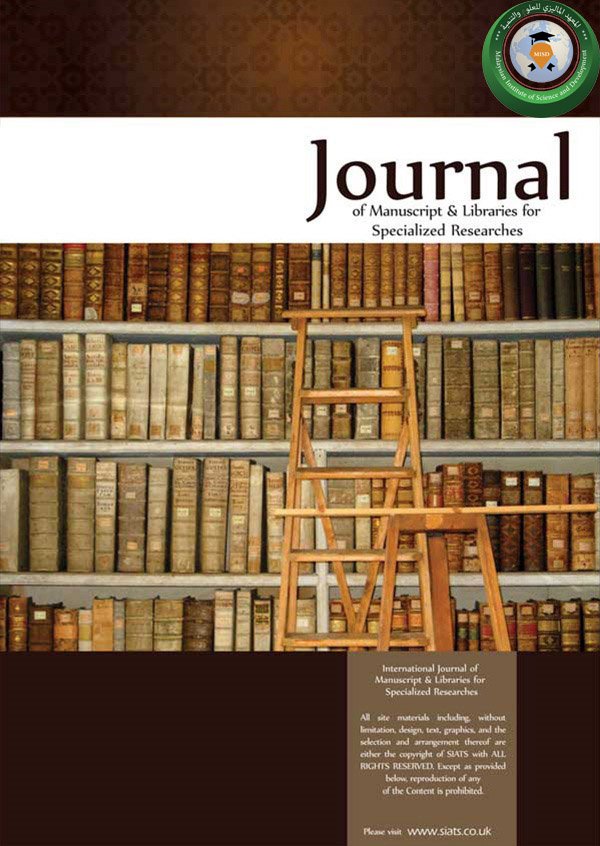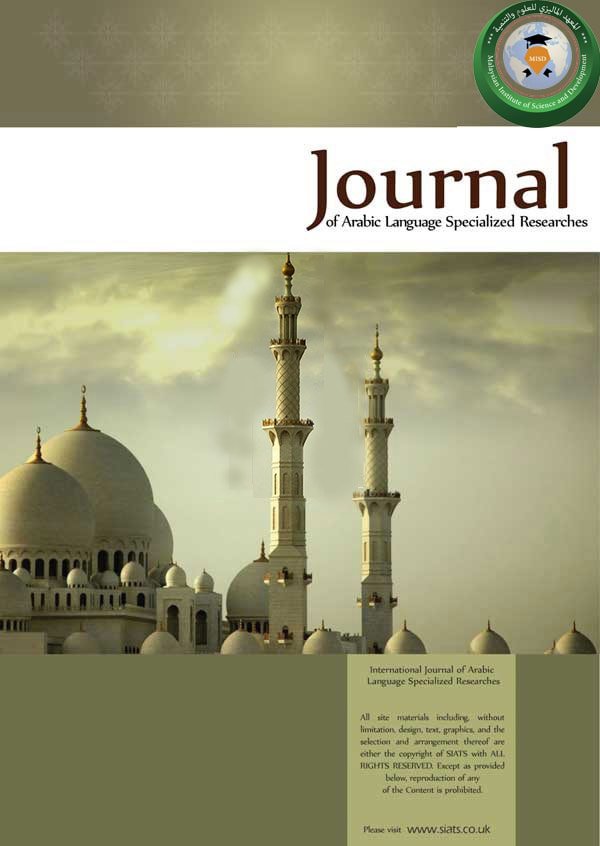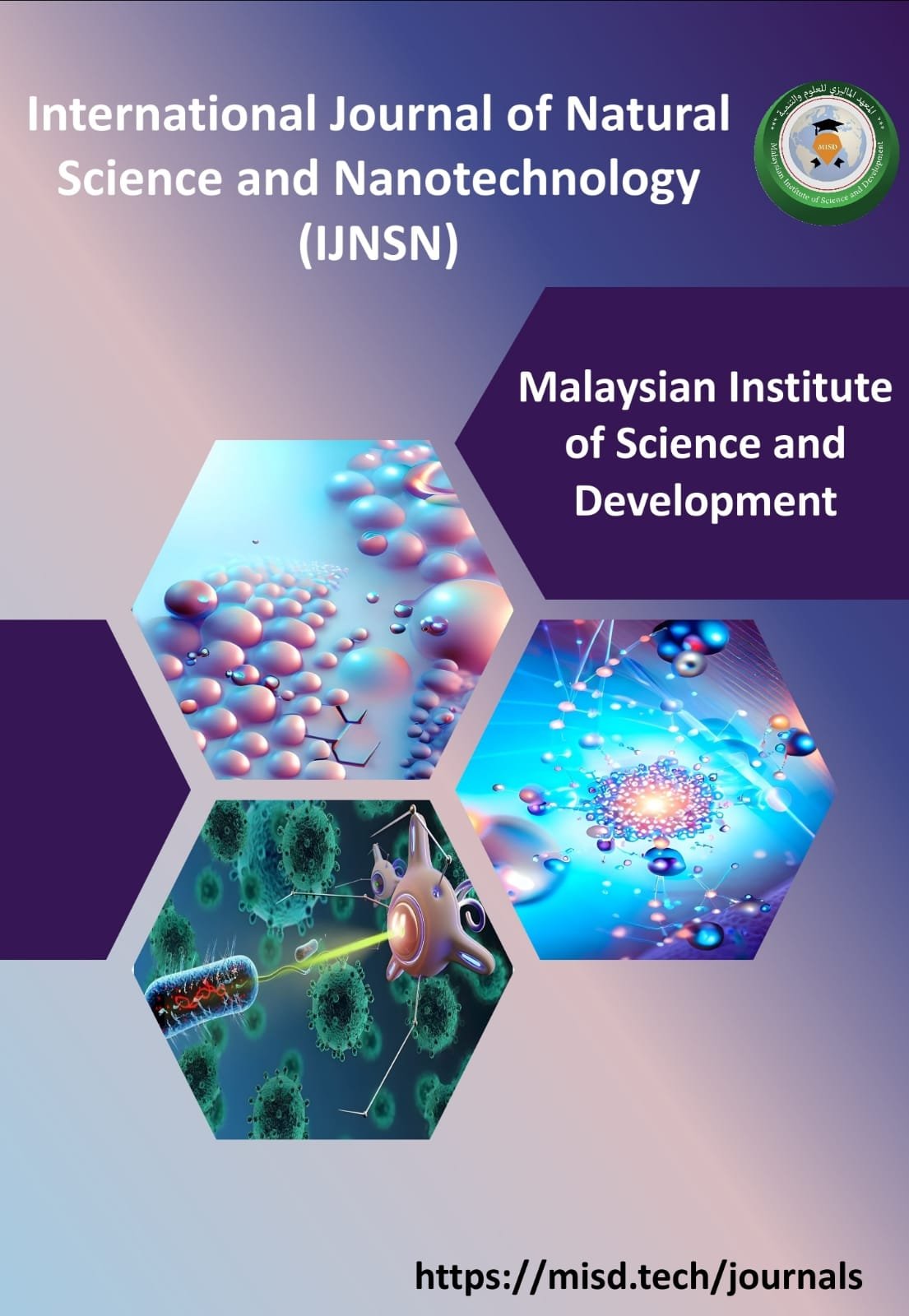
Journal of Manuscripts & Libraries for Specialized Research (JMLSR)
About the Journal :
The International Journal of Manuscripts & Libraries for Specialized Research, published quarterly on behalf of the Malaysian Institute of Science and Development is a referred scientific journal, which is supervised by a group of scholars who are specialized in heritage, museums, and library studies in the Arab and international universities.
The objectives of this journal are: – To spot light on our memorable history to inspire a brighter future; – To stimulate the minds of researchers and adorers of heritage; -To exert efforts for the purpose of mobilizing skills and capacities in gathering various cultural, thoughtful, and heritage backgrounds; -To interact with the important aspects of our bountiful heritage, by and with which we live and move forward to the achievement of innovation, invention & development; -To fight alienation of relations with heritage; – To interact with masterworks of heritage to dedicate them to researchers to serve as a platform for achieving development.
The journal seeks to promote technical and educational services in view of international standards through distinguished and specialized qualifications, use of modern technology, loyalty and devotion to work, and achieving excellence to provide researchers and students with the best services. This will create a professional encouraging environment for the excellent creative ideas and talents who are committed to team work values, spirit of respect, authenticity of vision, and excellence in objectives.
The journal concerns with public intellectuals, persons interested in heritage and manuscripts, text editors, graduate researchers, researchers of manuscripts, librarians and information centres, in support of being a pioneer journal that seeks to make heritage a deep rooted science, art, entertainment, and education within an attractive framework of knowledge, as a leading journal in the field of heritage, documentations, and manuscripts studies at the national and international levels. Furthermore, the journal publishes authentic and distinguished scientific, technical and applied researches in an attempt to become a significant and added value journal in the field of electronic media, which takes advantage of the valuable components of manuscripts to regain its original beauty and the identity of Arabs and Muslims since they represent national, historical, ideological identities. In addition to this, manuscripts are regarded as a source of pride of the heritage left by our parents and ancestors including sciences, cultures, knowledge, and arts.
SIGNIFICANCE OF FATIMID INSCRIPTIONS DISCOVERED IN BARQA
Yonis Amhimad Abdalla Israfil
Zulkiflee Bin Haron
Siham Abdel Razek Al-Qudaini
Yonis Amhimad Abdalla Israfil
Dr. Zulkiflee Bin Haron
(3) Siham Abdel Razek Al-Qudaini
aayonis@graduate.utm.my
Abstract
It seems that there is a certain style of Koufi font foliar script, which appeared in many decorative examples discovered in the cities of the province of Cyrenaica during the Fatimid period, where it was possible to trace the extent of the congruence of this artistic style, in the inscribed friezes coming from the cities of Sirte, Ajdabiya, and Cyrenaica, and the importance of the subject lies In tracing some fragments of writing discovered in some archaeological buildings and trying to use them to date those sites. The main reason for choosing this topic is due to the scarcity of studies dealing with kufic lines in Cyrenaica. The central question is how the discovered Fatimid writings were used to date the sites found there? The study aims to highlight on the Fatimid inscriptions of Barqa, analyze their features, and identify their importance. Perhaps what gives this study its original character in its attempt to set a specific date for the period of construction of the two mosques of Sirte and the Fatimid Ajdabiyah. In order to achieve these goals, we assumed that analyzing the nuggets of memorial inscriptions would help in studying the history of Fatimid architecture in the Libyan province of Barqa, and the researcher would follow the historical and descriptive analytical method.
The limits of the study: The spatial limit: the Libyan region of Barqa, and the temporal limit: the Fatimid period in the province of Cyrenaica (301-440 AH). The researcher hopes to set the historical and artistic framework for the emergence of kufic lines in the province of Cyrenaica, and the study is divided into two parts: a theoretical part that deals with the Fatimid existence in the region of Barqa and the second part is practical deals with discovered Fatimid inscriptions.
Keywords: Barqa - kufic lines - Ajdabiya.







 العربية
العربية